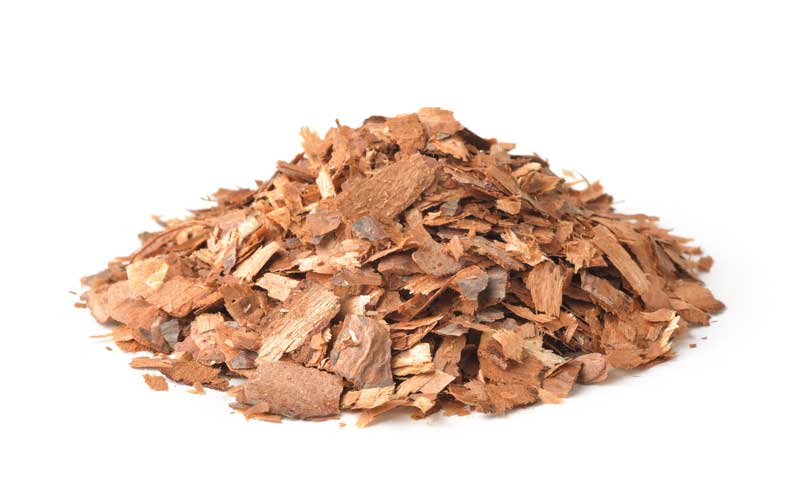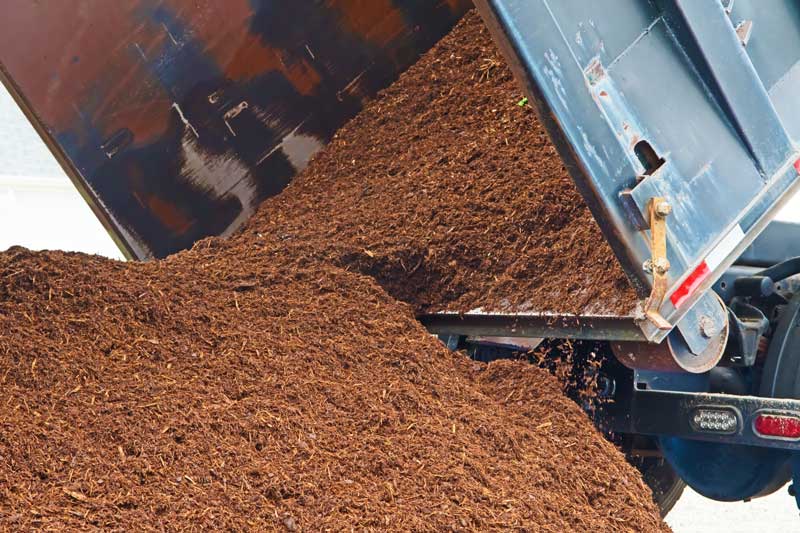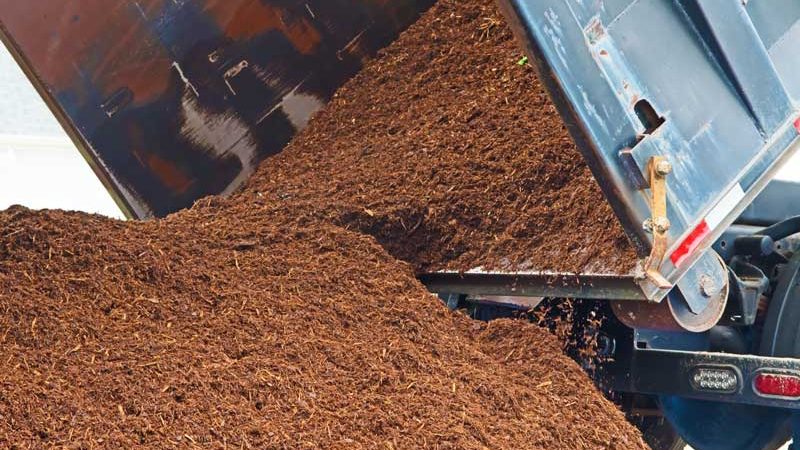Mulching plays a pivotal role in landscape planting, significantly enhancing both the health and aesthetics of mass planting landscapes. However, it’s crucial to choose the right type, and apply it correctly to avoid the risk of failure and potential environmental harm. This guide explores the various types of mulches, their purposes, and the importance of selecting the right type for your landscape needs.

Chunky mulch like this are good. There are no fine particles, meaning that the gaps between bark chips allow air and moisture to move much more freely. https://www.shutterstock.com/image-photo/heap-pine-bark-mulch-chips-isolated-2122993115
Types of Mulch
Mulches are broadly categorised into two types: ground cover mulch and soil conditioner mulch, each serving distinct functions within the landscape.
Ground Cover Mulch
Ground cover mulch should be coarse, without fines, and serves multiple purposes:
Moisture Retention: It helps retain moisture in the soil, reducing the need for watering.
Weed Prevention: Acts as a physical barrier against weed growth.
Nutrient Release: Gradually releases nutrients back into the soil, improving plant health.
This mulch type breaks down slowly, and protects the soil’s surface from direct sunlight and moisture escaping as evaporation. In turn, this encourages soil biodiversity which generally creates a net gain for plant health.

This mulch contains a lot of fine, dust-like particles which may restrict the movement of air and water. They can also provide a good medium for weeds to set root. https://www.shutterstock.com/image-photo/dump-truck-delivers-large-load-mulch-2163290589
Soil Conditioner Mulch
Designed to enhance soil quality, soil conditioner mulch uses well-composted or nitrogen-rich ingredients. Their benefits include:
Improving Soil Structure: Breaks down to add organic matter more quickly to soils, boosting fertility and improving structure, and biology.
Increasing Water Retention & Drainage: Enhances the soil’s ability to retain water, critical during dry spells. As well as helping with water retention, broken down organic matter can counterintuitively assist with drainage in heavier soils. It acts as a kind of sponge that holds water but releases it readily during flooding.
The presence of fine particles in mulch can lead to several issues, such as decreased porosity, disease proliferation, increased weed invasion, and drought stress among plants, due to poor air circulation and water retention. For ground cover, it’s recommended to use coarse grade mulch without fines to prevent these issues. For soil conditioning, mulch made from well-composted fines is advisable for its ability to enrich the soil with organic matter, thus promoting healthier plant growth.
Recommended Mulch Products
For ground cover applications, there are various mulch products to choose from, including hardwood chip, forest blend, pine bark mini nuggets, redwood chip, cypress pine wood chip, and chunky pine bark. Selecting the right product depends on the specific needs of your landscape.
When it comes to soil conditioning mulches, these can include ingredients such as bark chips, compost, manure, worm castings, insect frass, blood and bone, and other organic soil conditioners.
Conclusion
Selecting and applying the correct type of mulch is crucial for the success of landscape plantings. Whether the goal is to cover the ground or condition the soil, the right mulch can help achieve visually pleasing results while promoting environmental sustainability.

